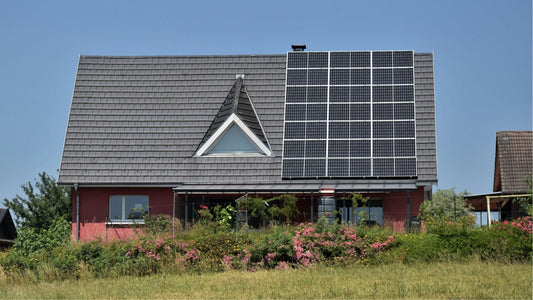Are you an avid RV enthusiast looking to harness the power of the sun to fuel your adventures? Solar panels offer a sustainable and reliable solution to keep your RV powered up while minimizing your reliance on traditional energy sources. But the question remains: How many solar panels do you actually need to effectively run your RV? In this comprehensive guide, we will delve into the factors that determine the ideal number of solar panels for your RV setup. Whether you're a weekend camper or a full-time RVer, read on to discover the insights you need to make an informed decision.
Understanding Your Energy Needs
Before we can determine the number of solar panels required, it's important to understand your RV's energy needs. The energy consumption of an RV can vary depending on several factors, including the size of the RV, the number of appliances and devices used, and your personal usage habits. Take a moment to assess the power requirements of your RV, considering both essential appliances like refrigerators, lights, and water pumps, as well as additional amenities such as air conditioning units and entertainment systems.
Calculating Solar Panel Requirements
To determine the number of solar panels needed, we need to consider two key factors: the daily energy consumption of your RV and the solar panel's capacity. Let's break it down into a step-by-step process:
Step 1: Assess Your Daily Energy Consumption
Start by calculating your average daily energy consumption. This can be done by adding up the wattage ratings of all the appliances and devices you use in a day. Keep in mind that some appliances may have a higher wattage during startup, so it's essential to consider these peak power requirements as well.
For example, let's say your RV has a refrigerator with a wattage rating of 100W, lights totaling 50W, a water pump at 30W, and an entertainment system at 80W. Adding these up, your total daily energy consumption would be 260W.
Step 2: Consider Available Sunlight
The amount of sunlight your RV receives plays a crucial role in determining the number of solar panels needed. If you frequently camp in regions with abundant sunlight, you can expect higher solar energy production. On the other hand, if you often travel to cloudy or shaded areas, you may need additional solar panels to compensate for reduced sunlight exposure.
Step 3: Determine Solar Panel Capacity
Next, consider the wattage capacity of the solar panels you intend to install. For instance, if you have your eyes on the Rocksolar 200W 12V Rigid Monocrystalline Solar Panel, which offers a power output of 200 watts, you can calculate the number of panels needed based on your daily energy consumption. Remember to account for any inefficiencies or losses in the solar panel system, which can range from 10% to 30% depending on various factors.
Step 4: Do the Math
Using the data gathered in the previous steps, you can now calculate the number of solar panels required. Divide your daily energy consumption by the wattage capacity of the solar panel to get the minimum number of panels needed. However, it's always a good idea to add a buffer and consider factors like weather fluctuations and future energy needs. Additionally, consider the physical space available on your RV roof for solar panel installation.
Continuing with our example, if your daily energy consumption is 260W and you have a solar panel with a capacity of 200W, you would need at least two solar panels. However, it's recommended to add a buffer and account for inefficiencies, so you might consider installing three panels.
Optimizing Your Solar Panel System
While calculating the number of solar panels is crucial, optimizing your solar panel system can significantly enhance its performance. Here are some essential considerations to ensure you make the most of your solar power setup:
1. Solar Panel Placement
Proper placement of solar panels is essential to maximize sunlight exposure. Aim for a location that receives the most direct sunlight throughout the day, free from any obstructions like trees or tall structures. Tilt and angle the panels to capture the sun's rays at the optimal angle for your geographical location.
2. Solar Charge Controller
Invest in a high-quality solar charge controller to protect your RV's battery and optimize the charging process. A solar charge controller regulates the flow of electricity from the solar panels to the battery, preventing overcharging and extending the battery's lifespan.
3. Battery Bank Capacity
Ensure your RV's battery bank has sufficient capacity to store the solar energy generated. A larger battery bank allows you to store excess energy for use during cloudy days or nighttime. Consider investing in deep-cycle batteries specifically designed for solar applications, such as the Rocksolar Lithium Iron Phosphate Deep Cycle (LiFePO4) batteries.
4. Energy Monitoring System
Implement an energy monitoring system to track your solar power system's performance. This allows you to monitor energy production, consumption, and battery levels, empowering you to make informed decisions and optimize your energy usage.
5. Wiring and Installation
Proper wiring and installation are critical for the safe and efficient operation of your solar panel system. Follow the manufacturer's guidelines or consult a professional to ensure correct wiring connections, use appropriate cable sizes, and secure the panels firmly in place.
By understanding your RV's energy needs, calculating the required number of solar panels, and optimizing your solar panel system, you can embark on your RV adventures with confidence, knowing you have a sustainable and reliable power source at your disposal. Explore the range of rigid solar panels available at Rocksolar, including the Rocksolar 200W 12V Rigid Monocrystalline Solar Panel, and take a step towards an eco-friendly and self-sufficient RV lifestyle. Embrace the power of the sun and unlock the freedom to roam while minimizing your environmental footprint.




